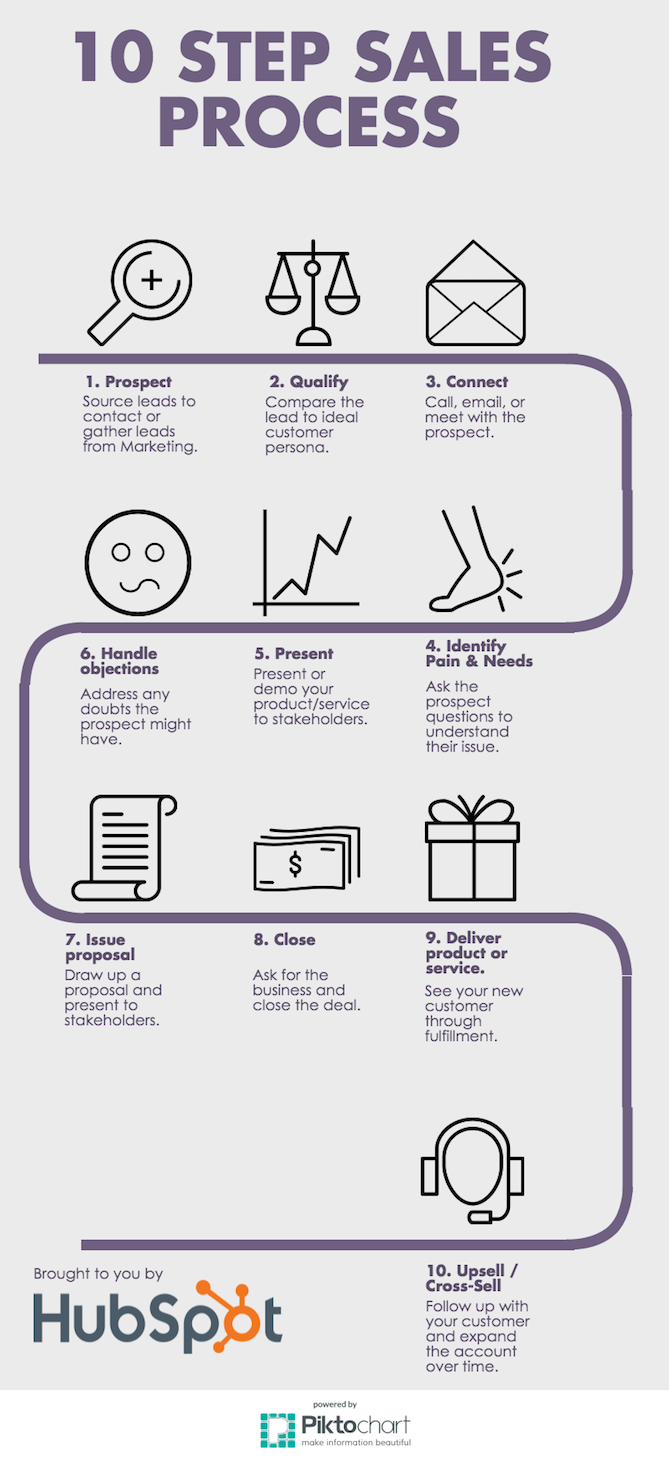
This post originally appeared on HubSpot’s Sales blog. To read more content like this, subscribe to Sales.
There’s a reason why teachers instruct students to make an outline before they start writing a paper. With a defined outline, writers ensure they address each point in the correct order. Without an outline, writers sometimes forget to include a crucial argument, or construct their paper in an illogical manner.
Think of a defined sales process as the outline of selling.
Without a concrete sales process, reps create their own strategies, which gives rise to two negative results:
- Depending on how the rep approaches sales, they might provide a bad experience for the buyer
- Sales managers can’t glean team-wide data
If your team doesn’t work from a standardized sales process, check out the visual template below. The graphic depicts a basic 10-step sales process:
- Prospect
- Qualify
- Connect
- Identify Pain and Needs
- Present
- Handle Objections
- Issue Proposal
- Close
- Deliver Product/Service
- Upsell/Cross-Sell
Working from this template, you can customize a sales process that will work for your team. Too many steps? Cut a few. Too few? Add some. But whatever you do, define a sales process — and hold reps to it.

Share this Image On Your Site
<p><strong>Please include attribution to http://blog.hubspot.com/sales with this graphic.</strong><br /><br /><a href=’http://blog.hubspot.com/sales/what-a-basic-sales-process-looks-like-visual-template’><img src=’http://cdn2.hubspot.net/hubfs/53/10_step_sales_process.png’ alt=’Sales Process Infographic’ width=’669px’ border=’0′ /></a></p>
![]()






